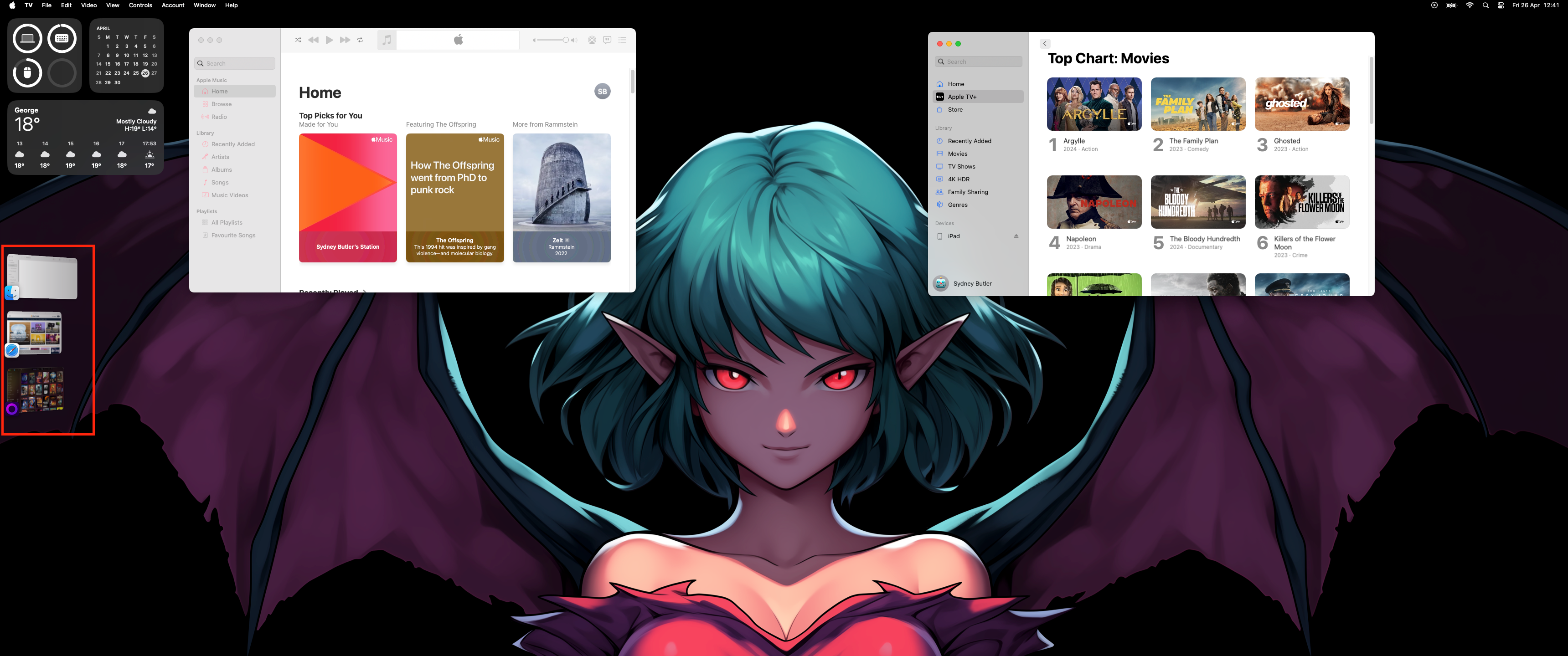Key Takeaways
- Stage Manager offers no new or intuitive features.
- Takes up too much screen space on 13-inch devices.
- Stage Manager feels out of place on macOS and iPadOS.
Apple tried to introduce and improve window management for the iPad and Mac, respectively, with Stage Manager. However, like many people, I turned it on to see what it was all about, and then turned it off and forgot all about it. After all this time, I still don’t feel the need to flip that switch, and I suspect neither do many of you.
Stage Manager Does Nothing New, and Does It Worse
OK, maybe it’s not entirely fair to say that Stage Manager does nothing new, since if it simply offered the same window management features, but made them easier and more intuitive to use, that would be enough. However, compared to Windows 11 and the various modern flavors of Linux, window management on macOS and iPadOS is as bare bones as it gets.
If Apple introduced intuitive window snapping, or those wonderful pre-made window arrangements templates from Windows 11 to macOS, I’d be on the Stage Manager bus faster than you can say “black turtleneck”, but for now it just seems like a more awkward way to access the same windows management system that was already there on Mac, and frankly is unnecessary on iPad.
It’s a Waste of Screen Real Estate
The column of space that’s taken up on the side of the screen by the Stage Manager system is far too much for 13-inch devices like the iPad Pro or small MacBooks. Even when hooked up to my 34-inch ultrawide main screen, it’s an eyesore.
Yes, the little windows scoot out of the way when you move a window over them, but I much prefer how the dock behaves if you set it to hide. Only popping up when I mouse over it.
It Just Doesn’t Suit macOS or iPadOS’s Design
I think overall Apple has done a great job bringing some of the better parts of iOS and iPadOS to macOS. I like the modern notification center and Control Center quite a lot. However, even on the iPad, Stage Manager feels bolted-on as an afterthought, and on macOS it’s even more of a sore thumb. There’s something off about the look and feel of Stage Manager, and it doesn’t seem to fit the visual and operational style of either operating system.
IPad Extended Display Is Locked to Stage Manager (Why?)
It’s almost always been possible to connect an iPad to an external screen using an adapter. However, all you’d get was a mirror of the iPad’s own display and in the iPad’s aspect ratio to boot! The only exception was for certain apps that would play content at the external screen’s native resolution and ratio, but these were relatively rare.
If you have an iPad running an M-series Apple Silicon chip (e.g. the M1 or M2) then you have access to a feature known as “extended display.” Here the iPad offers genuine dual-monitor functionality, and you can have different apps on either screen. However, you must have a mouse connected for extended display mode to kick in when you have a monitor hooked up, and you can only control stuff on the external monitor using a mouse.
Stage Manager isn’t optional here, and it does indeed introduce proper windows to the iPad. However, it’s completely unnecessary in my opinion. Apple could just as well have ported over the basic window management system from macOS. Stage Manager might look like a more touch-friendly take on this, except in this mode you’re always using a mouse! In fact, extended display would have worked just fine using iPadOS’ current split screen and Slide Over features and I wish that were an option we could toggle.
Spaces and Mission Control Just Work Better
I know that many macOS users have third-party windows management solutions so that they can get access to more advanced features, or at least features that are standard in other operating systems. While it does depend on your specific workflow, I have never found the need to change anything on macOS in this regard myself. I mainly use Mission Control (activated with Control and the “up” cursor key) and Spaces (changed by using Control and the left and right cursor keys) for all my window management needs.
I can have my main work screen in one space, my 3D printing slicer in the next, Spotify in its own space, and so on. It just takes a keystroke or a mouse click to go wherever I need to, and I just can’t fathom how Stage Manager would make this work any faster or easier. I’d love to say that there’s the kernel of a good idea within Stage Manager, and it just needs to be refined, but honestly, I think time would be better spent beefing up and polishing the existing vanilla macOS experience instead.

